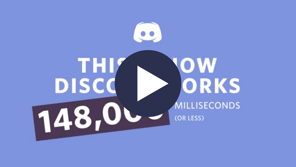How AI is Transforming eLearning
- 30 Oct 2024
- 8 mins read
- Posted in
Content:
- What is AI in eLearning
- How AI is Reshaping Personalized Learning
- The Impact of Predictive Analytics in eLearning
- The Benefits of AI in Content Creation
- The Challenges of AI in eLearning
- Future Trends in AI-Driven eLearning
- Preparing for the Future of AI in eLearning
What is AI in eLearning?
Artificial intelligence transforms education by delivering personalized content paths, automating routine assessments, and offering real-time tutoring support, capabilities that empower educators to scale individualized learning experiences with precision and consistency.
Walking into any classroom today, those over the age of 30 will be surprised to see how much has really changed. The good old chalkboards have made way for big screens. Notebooks are being replaced by iPads and laptops. In fact, for a brief period during the pandemic, entire classrooms shrunk down to Zoom screens.
Technology has touched many parts of the academic sphere – but what about the teachers and students? The idea of robot teachers has been the stuff of sci-fi movies and shows for decades – think of movies like The Class of 1999 and After Yang, or the 60s cartoon The Jetsons where the young Elroy is taught by a robot.
Today, reality is not far behind! Although we’re not talking robot teachers just yet, AI in eLearning is revolutionizing education like never before. AI in eLearning is where algorithms and machine learning models are used to create an enhanced learning experience for students – and equip teachers with advantages that free up time and effort.
Defining the Role of AI in Digital Education
AI in education makes up a $5.1 Billion market already – and this is estimated to reach $47.7 Billion by 2030. Needless to say, the role of Artificial Intelligence in this space can no longer be ignored.
The reason for this boom is likely due to the fact that AI is bridging many gaps in traditional learning techniques, enabling educators to make a bigger impact on students.
Today, we have some pretty advanced machine learning algorithms that understand exactly how students learn, and adapt accordingly to offer solutions that would be better suited for individual students. We have natural language processing (NLP) capabilities that let learners interact with AI tools in a very organic way, to find the support they need.
We also see more sophisticated data analytics that process all the information available in any learning interaction, equipping trainers and teachers with better insights about what students really need to improve. Let us look at some tangible ways AI is shaping education.
How AI is Reshaping Personalized Learning
One of the top advantages of AI in eLearning is that it helps create a more personalized learning experience. It makes possible the kind of tailored support that goes beyond what a human teacher can possibly offer.
Adaptive Learning Paths
Traditional learning typically does not make much room for diversity in terms of students’ abilities. Learning materials are only taught one way – and those from different backgrounds or with special needs are often left to play catch-up, or be left behind. This is where eLearning can make a difference with the kind of AI innovations that we have available today.
Adaptive learning technology makes learning more tailored, helping people go through the material at their own pace. With AI software, it is now possible to have the course progress as per each student’s needs – going over a certain concept as many times as required and adjusting the content to get more difficult as the student gets more skilled.
It also accounts for the fact that different learning methods work for different people – some people absorb information better visually, others find audio learning techniques more effective. AI learning tools can curate content based on individual preferences. This kind of hyper-personalization would not have been possible in a traditional classroom environment.
Intelligent Tutoring Systems (ITS)
Previously, it wasn’t possible for every student to access personal tutoring – with one-on-one attention from teachers only being open to a privileged few. Today, AI-based Intelligent Tutoring Systems in education are leveling the playing field.
Powered by NLP tools, students are now able to ‘converse’ with AI tutors in a more personalized way. They can ask questions, have the tool explain complicated concepts, or request additional resources that are specifically relevant to their skill level.
The algorithms that power these ITS platforms are also able to analyze these interactions to identify individual student’s weaknesses and offer tailored, real-time feedback for improvement. This keeps learners better engaged with the course.
Making Learning More Accessible
AI-driven translators are also breaking down educational barriers across geographies. They make it easier for students to access learning materials by experts from around the world, and have these materials translated in their own language in real-time.
This is a huge advantage for global businesses too. They can now host workshops and eLearning seminars across their offices in various locations, ensuring that all their employees have access to the same training and materials.
The Impact of Predictive Analytics in eLearning
Any learning interaction generates a vast quantity of data and insights about how students absorb information. These remain untapped in traditional learning environments. Now, with AI-powered predictive analytics in eLearning, systems can extract these insights – helping educators understand the obstacles and barriers that students may be facing.
Here are a few ways in which predictive analytics can be a game-changer.
Data-Driven Course Adjustments
Predictive models can be an instrumental tool for teachers in understanding whether students are responding to the material well. They can help forecast how well a classroom of students will perform based on their current understanding, identifying areas of weakness or potential pitfalls. This helps teachers course-correct as required, adjusting the content to be more relatable.
They can create more relevant assignments and practice sheets to help students come up to speed in relevant ways.
Identifying At-Risk Students
Predictive data can also flag students who are underperforming or are at risk of abandoning the course altogether. Educators can then plan timely interventions to help them feel more connected.
They can use the insights available to understand what went wrong and suggest remedial steps that will work for the learner in question. For example – if the student responds better to visual learning methods, the teacher can offer more video resources and visual cues.
The Benefits of AI in Content Creation
Teachers, trainers and facilitators are usually responsible for designing the course and creating content for it. This is a very time-consuming job, requiring a lot of hands-on involvement. AI tools can now ease this burden to a great extent.
Automating Course Materials
A big part of an educator's responsibility is to create quizzes, assignments, data sheets and practice sheets for students. They can now automate these repetitive tasks with AI tools like Quizzizz or lingio, generating fresh, unique content in seconds with just a few strong prompts.
This frees up valuable time for teachers – and creates an opportunity for them to get more creative with their assignments and quizzes, rather than relying on the same formats they’ve always used.
What’s more, given that AI makes it possible for learners to navigate courses at their own pace, they may require more personalized content based on what stage of their learning journey they’re at. Providing such tailored materials would have been impossible before – but not anymore.
Easing the Burden of Grading
Grading is another task that takes up a lot of time for educators everywhere – and this is something AI technology can automate too.
Multiple choice questions can easily be matched and scored with AI tools. Now, educators also have the technology that can scan through more subjective essay questions to analyze the quality of the answers provided, spot errors, and offer highly relevant feedback.
This can leave teachers free to design more creative courses and modules rather than have hours of their time sucked up with administrative grading-related tasks.
Improving Engagement with Interactive Content
Course content can get more interactive and engaging with AI. With the seemingly limitless possibilities, it is now no longer necessary to force every learner to consume the same materials. Learning institutes can create hyper-personalized modules.
For example, imagine thirty students in a classroom, each going through a unique course with a diverse mix of subjects that prepare them better for the career they are looking to pursue. Imagine a corporate learning platform that predicts how job roles will change, and creates customized learning recommendations for each employee. This gives learners a degree of control in their own learning path, making the journey more interesting and relevant.
The Challenges of AI in eLearning
However, AI technology is still at a developmental stage, which means there are still several challenges to keep in mind. Let’s explore some very valid concerns around AI in eLearning:
Data Privacy and Security
The advantages of predictive analysis and hyper-personalization can only be possible when AI systems have access to learner data. This not only includes sensitive personal information, but also details like individual learning preferences, weaknesses and other vulnerabilities. This prompts valid questions around privacy issues – what happens if that data is misused or leaked?
Companies too, would be well advised to keep data privacy considerations in mind. It’s all very well to let employees upskill based on their changing job roles, or learn from real-world use-cases from their work days. But what happens if an employee learning a module puts confidential information into an open AI tool like ChatGPT? Proprietary company data might be compromised, with sensitive information suddenly being accessible in the public domain.
These considerations call for robust licensing and protection policies, training for users, and transparency around data storage and usage.
AI’s Role in Bias and Accuracy
AI tools create content from material available in the public domain. But this means if the original material features certain biases or inaccuracies, they get amplified in the new eLearning material created. This can compromise the quality of education – disseminating misinformation and biased perspectives as facts.
This highlights the crucial roles of subject matter experts in vetting the content, updating new information and ensuring the accuracy of eLearning modules at the creation stage, before the material is distributed to learners. Fortunately, engaging subject matter experts (SMEs) in eLearning projects is becoming easier than ever before.
Algorithms that power predictive analyses and recommendations are also prone to biases. For example, AI algorithms can use demographic data to form inaccurate assumptions about a learner’s capabilities – and keep generating less challenging material for them. This may create an unequal learning experience in a diverse group.
Copyright Issues
Using publicly available materials for content creation or software training also throws up questions around ethics. Currently AI tools use this information without acknowledging or compensating the original creator.
Existing copyright laws still do not address this properly, with no clear policies around how ethical it is to use pre-existing materials. It also blurs the boundaries around plagiarism – for example, is it ok for students to submit plagiarized content, when the resources they are learning from are plagiarized as well?
Future Trends in AI-Driven eLearning
Despite the challenges discussed above, AI holds an important place in the future of eLearning, with new trends already offering an indication of how the industry will evolve.
The Integration of AI and Virtual Reality (VR)
Learning is set to get more interactive than ever, with new evolutions in Augmented Reality and Virtual Reality technologies. Learners often struggle to absorb information when they do not relate to it. For instance, significant moments in history may seem dull and distant to young students in the modern context.
But AR/VR innovations can enable them to ‘step into’ history and live those moments themselves – making the experience highly immersive and memorable. Such experiential modules are likely to be integrated into courses in future, with AI making it easier to create and distribute these resources.
AI-Driven Gamification in eLearning
Gamification and social learning are other big AI-driven eLearning trends. AI gaming innovations are already making dry courses more interactive – and the future is sure to hold more exciting formats. Think of AI systems matching you to similarly skilled learners, throwing you real-time challenges, creating milestones and updating leaderboards that track your progress.
Aside from making learning more exciting, gamification brings another major advantage. Gaming analytics offer crucial insights into user’s aptitude, behaviors and preferences. These can be important tools for teachers to create better learning experiences for individuals.
Preparing for the Future of AI in eLearning
Staying Ahead of AI Trends in Education
With immense potential comes immense challenges. Dull, cookie-cutter courses don’t cut it anymore amongst the engaging, hyper-personalized offerings in the market today. Companies and learning institutions are facing increased pressure to keep up with the new trends in eLearning – and AI adoption is the way to do that.
According to one survey, 44% of participating organizations said that AI plays a crucial role in their short- and mid-term plans, and organizations without any AI-driven plans in the pipeline stood at just 14% in 2022.
Investing in flexible AI tools and learning platforms, thus, is becoming the need of the hour. However, over-reliance on such tools without appropriate human intervention can spell disaster. Most eLearning creators are realizing that an optimal combination of artificial intelligence and human expertise is the way to navigate future requirements – and are turning to Subject Matter Experts (SMEs) to achieve that balance.
Incidentally, AI is making it simpler to find these SMEs as well. PeoplePerHour’s AI-driven tool ‘Phoenix’ for example, makes it super easy for you to discover freelance experts from around the world with the exact set of skills you require for your current eLearning project.
TalentDesk’s E-Learning Insights Report 2024
As the eLearning space evolves in the context of artificial intelligence, freelancers are getting to become an integral part of this industry – both as creators and as users.
Companies are looking to AI developers, coders, designers and subject matter experts (SMEs) as they create eLearning offerings and platforms. These projects require incredibly sophisticated skills on a non-recurring basis – making engaging freelance professionals the ideal way to fill this gap.
On the other hand, many businesses are also turning to more freelancers to meet their internal staffing needs under budgetary constraints. One recent survey by TalentDesk shows freelancers make up 30% of respondent’s entire staff.
This means freelance professionals are an important user base of eLearning resources too. These professionals need to stay upskilled in this competitive market – and as freelancers, they are responsible for their own training and learning (unlike employees who are trained by the employers). More freelancers thus turn to digital resources to access the training they require.
So how are freelancers going to shape the eLearning space in the future, and what are eLearning providers doing to manage changing demands? Download our free report to access more industry insights in context of the AI revolution.

Sanhita Mukherjee
Speak to us to find out how we can help you manage your SMEs
Related articles

AI Knows You’re Burned Out Before You Do
See how AI prevents burnout by spotting early warning signs, reducing stress before it escalates, and supporting freelancers and teams.

31 Game-Changing AI Marketing Tools for 2025
Discover 31 game-changing AI marketing tools – from automation to personalization, these tools will revolutionize your campaigns and boost efficiency.

Why Businesses Should Invest in AI or Risk Getting Left Behind
Discover why investing in AI is essential. Explore the benefits of automation, decision-making, and staying competitive in an AI-driven future.

2024 Engineering Recap
See how we enhanced features and added automation in 2024 to improve TalentDesk user experience. Here's a full recap and a look ahead to 2025.

Top 12 Mental Health and Wellbeing Platforms for 2025
See the top mental health and wellbeing platforms for 2025. From guided meditation to mood tracking, get the best apps to support your employees' health.

AI in Gaming: The Future of Artificial Intelligence in Game Development
The ultimate guide to AI in the gaming development industry. Learn how Artificial Intelligence is revolutionizing NPCs, game design, and player experiences.

Phoenix Rising: AI-Powered Freelance Talent Discovery Takes Flight
Discover Phoenix: the AI-powered assistant revolutionizing freelance talent discovery. Connect faster, smarter, and more securely with top freelancers.

Revolution or Disruption? The impact of AI in Entertainment & Media
Revolution or disruption? Our comprehensive article explores the risks & benefits of AI in entertainment & media. Read key industry insights and opinions.

Top 10 Best Video Animation Agencies
This is an overview of our favorite and best animation agency choices. Check out animation examples of these top animation agencies in our top 10 list.

How to Manage Subject Matter Experts
Unlock the full potential of your projects with our expert guide on managing Subject Matter Experts. Learn strategies for effective collaboration.
